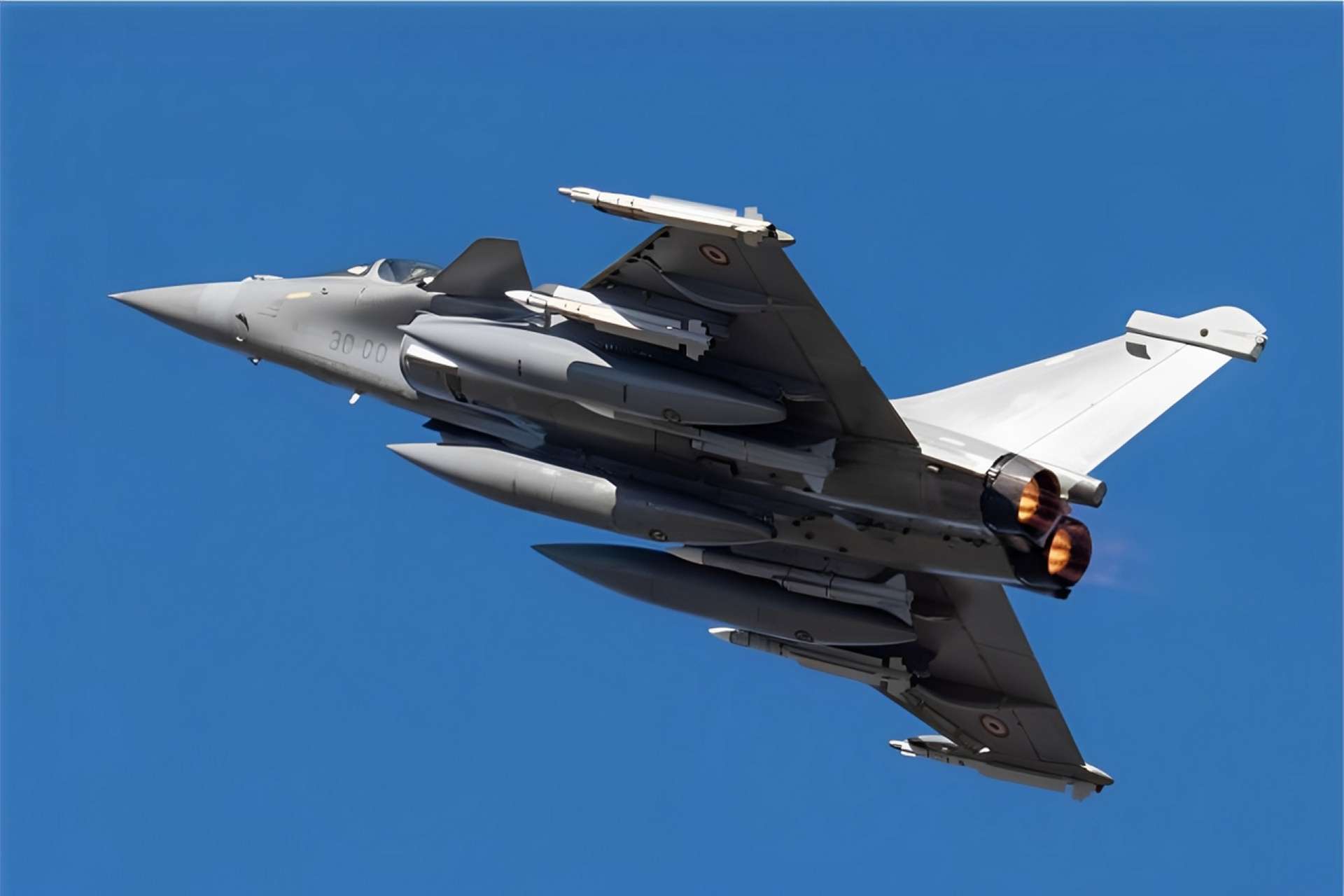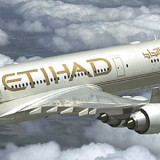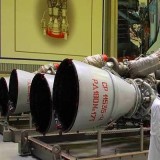France Delivers 14th and Final Rafale Multi-Role Aircraft of 2024 to French Air and Space Force

{loadposition bannertop}
{loadposition sidebarpub}
On December 27, 2024, the Directorate General of Armaments (DGA) received the 14th and final Rafale of the year at the Dassault Aviation site in Mérignac (Gironde). This aircraft, delivered in the F4.1 standard, is part of a batch of 39 Rafales intended to be delivered to the French Air and Space Force by the end of 2025. A 40th aircraft will be delivered in early 2026 to be converted into a testbed aircraft, intended for development trials conducted by DGA Flight Tests.
Follow Army Recognition on Google News at this link
The Rafale is a versatile multi-role fighter aircraft developed and produced in France. (Picture source: French MoD)
A 42-aircraft order, corresponding to the fifth production tranche of the Rafale, was notified at the end of 2023 to Dassault Aviation, Thales, Safran, and MBDA. Deliveries from this tranche will begin in 2027. Since the launch of the Rafale program in 1993, the DGA has ordered a total of 234 Rafales from Dassault Aviation, Thales, Safran, and MBDA.
The Rafale program, managed by the DGA for the benefit of both the French Air and Space Force and the French Navy, has undergone successive upgrades to ensure its technological and operational excellence. These developments have allowed the aircraft to adapt to the evolving needs of the military in the face of contemporary threats. The F4.1 standard, which represents the first phase of the F4 standard, qualified by the DGA in March 2023, marks a significant advancement in the realm of collaborative air combat. This standard introduces major changes in the conduct of air combat operations. Among these innovations is the integration of the Scorpion helmet-mounted display, improved firing control for the use of the Meteor missile (which can now be guided by an aircraft other than the one firing), and the evolution of passive threat detection algorithms. This standard also allows for enhanced data exchange capabilities between Rafale aircraft and includes the integration of the AASM 1000 kg GPS/laser-guided weapon, strengthened protection against cyber threats, new functionalities for the Talios targeting pod, the front-sector optronic sensor (OSF), and the RBE2 radar, as well as initial advancements in connectivity.
The Rafale is a versatile multi-role fighter aircraft developed and produced in France, designed to perform a variety of missions, including air superiority, ground attack, and reconnaissance. It is operated primarily by the French Air and Space Force and French Navy but has also been adopted by other countries. The aircraft can be operated by a single pilot or have a crew of two, depending on the mission requirements.
The Rafale is powered by two M88-2 turbofan engines, which allow it to achieve a maximum speed of 1,800 km/h, making it a highly agile and fast aircraft. It also boasts a remarkable range of 3,700 km, giving it the ability to conduct long-duration missions without the need for frequent refueling. The aircraft’s maximum takeoff weight is 24,500 kg, providing it with a balanced payload capacity while maintaining exceptional performance.
In terms of avionics, the Rafale is equipped with advanced systems to enhance its operational capabilities. These include the SPECTRA electronic warfare system, which provides protection against electronic threats, and the Optronique Secteur Frontal (OSF), a sophisticated optronic sensor used for target detection and tracking. The aircraft also features Integrated Modular Avionics (IMA), known as the Modular Data Processing Unit (MDPU), which ensures that all systems work in unison to optimize performance. Additionally, the Rafale is equipped with the RBE2 AA Active Electronically Scanned Array (AESA) radar, which allows it to detect and engage targets with great precision, even in complex environments.
The aircraft’s dimensions are also notable, with a length of 15.27 meters, a wingspan of 10.8 meters, and a height of 5.34 meters. These dimensions contribute to the Rafale’s ability to operate in various conditions, whether it be from land bases or aircraft carriers, making it a true multi-role platform for the modern battlefield.
All Rafales operated by the French Air and Space Force and the French Navy will gradually be retrofitted to the F4 standard in the coming years. The industrial architecture of the Rafale program is entrusted to Dassault Aviation, which produces the equipped airframe, while the engines are provided by Safran Aircraft Engines (formerly Snecma). The active antenna RBE2 AESA radar and the OSF optronic system are developed by Thales, and the SPECTRA electronic warfare system is designed in collaboration between Thales and MBDA.
The Rafale program supports over 7,000 direct and indirect jobs in France, with the participation of more than 400 companies. Numerous industrial sites across the country are involved, including locations in Cergy, Argonay, Biarritz, Bourges, Brest, Brive, Cholet, Corbeil-Essonnes, Élancourt, Étrelles, Gennevilliers, Laval, Martignas-sur-Jalle, Mérignac, Poitiers, Seclin, Vendôme, and Villaroche.

{loadposition bannertop}
{loadposition sidebarpub}
On December 27, 2024, the Directorate General of Armaments (DGA) received the 14th and final Rafale of the year at the Dassault Aviation site in Mérignac (Gironde). This aircraft, delivered in the F4.1 standard, is part of a batch of 39 Rafales intended to be delivered to the French Air and Space Force by the end of 2025. A 40th aircraft will be delivered in early 2026 to be converted into a testbed aircraft, intended for development trials conducted by DGA Flight Tests.
The Rafale is a versatile multi-role fighter aircraft developed and produced in France. (Picture source: French MoD)
A 42-aircraft order, corresponding to the fifth production tranche of the Rafale, was notified at the end of 2023 to Dassault Aviation, Thales, Safran, and MBDA. Deliveries from this tranche will begin in 2027. Since the launch of the Rafale program in 1993, the DGA has ordered a total of 234 Rafales from Dassault Aviation, Thales, Safran, and MBDA.
The Rafale program, managed by the DGA for the benefit of both the French Air and Space Force and the French Navy, has undergone successive upgrades to ensure its technological and operational excellence. These developments have allowed the aircraft to adapt to the evolving needs of the military in the face of contemporary threats. The F4.1 standard, which represents the first phase of the F4 standard, qualified by the DGA in March 2023, marks a significant advancement in the realm of collaborative air combat. This standard introduces major changes in the conduct of air combat operations. Among these innovations is the integration of the Scorpion helmet-mounted display, improved firing control for the use of the Meteor missile (which can now be guided by an aircraft other than the one firing), and the evolution of passive threat detection algorithms. This standard also allows for enhanced data exchange capabilities between Rafale aircraft and includes the integration of the AASM 1000 kg GPS/laser-guided weapon, strengthened protection against cyber threats, new functionalities for the Talios targeting pod, the front-sector optronic sensor (OSF), and the RBE2 radar, as well as initial advancements in connectivity.
The Rafale is a versatile multi-role fighter aircraft developed and produced in France, designed to perform a variety of missions, including air superiority, ground attack, and reconnaissance. It is operated primarily by the French Air and Space Force and French Navy but has also been adopted by other countries. The aircraft can be operated by a single pilot or have a crew of two, depending on the mission requirements.
The Rafale is powered by two M88-2 turbofan engines, which allow it to achieve a maximum speed of 1,800 km/h, making it a highly agile and fast aircraft. It also boasts a remarkable range of 3,700 km, giving it the ability to conduct long-duration missions without the need for frequent refueling. The aircraft’s maximum takeoff weight is 24,500 kg, providing it with a balanced payload capacity while maintaining exceptional performance.
In terms of avionics, the Rafale is equipped with advanced systems to enhance its operational capabilities. These include the SPECTRA electronic warfare system, which provides protection against electronic threats, and the Optronique Secteur Frontal (OSF), a sophisticated optronic sensor used for target detection and tracking. The aircraft also features Integrated Modular Avionics (IMA), known as the Modular Data Processing Unit (MDPU), which ensures that all systems work in unison to optimize performance. Additionally, the Rafale is equipped with the RBE2 AA Active Electronically Scanned Array (AESA) radar, which allows it to detect and engage targets with great precision, even in complex environments.
The aircraft’s dimensions are also notable, with a length of 15.27 meters, a wingspan of 10.8 meters, and a height of 5.34 meters. These dimensions contribute to the Rafale’s ability to operate in various conditions, whether it be from land bases or aircraft carriers, making it a true multi-role platform for the modern battlefield.
All Rafales operated by the French Air and Space Force and the French Navy will gradually be retrofitted to the F4 standard in the coming years. The industrial architecture of the Rafale program is entrusted to Dassault Aviation, which produces the equipped airframe, while the engines are provided by Safran Aircraft Engines (formerly Snecma). The active antenna RBE2 AESA radar and the OSF optronic system are developed by Thales, and the SPECTRA electronic warfare system is designed in collaboration between Thales and MBDA.
The Rafale program supports over 7,000 direct and indirect jobs in France, with the participation of more than 400 companies. Numerous industrial sites across the country are involved, including locations in Cergy, Argonay, Biarritz, Bourges, Brest, Brive, Cholet, Corbeil-Essonnes, Élancourt, Étrelles, Gennevilliers, Laval, Martignas-sur-Jalle, Mérignac, Poitiers, Seclin, Vendôme, and Villaroche.






